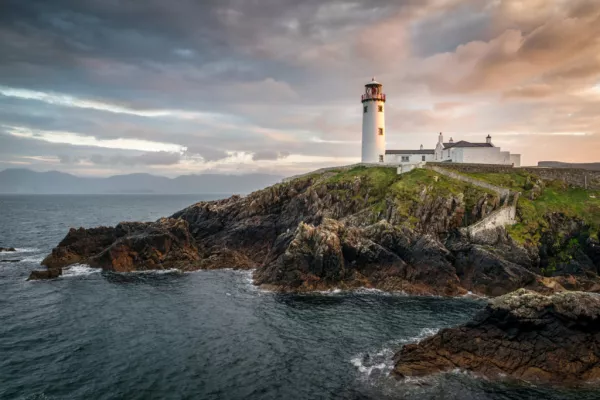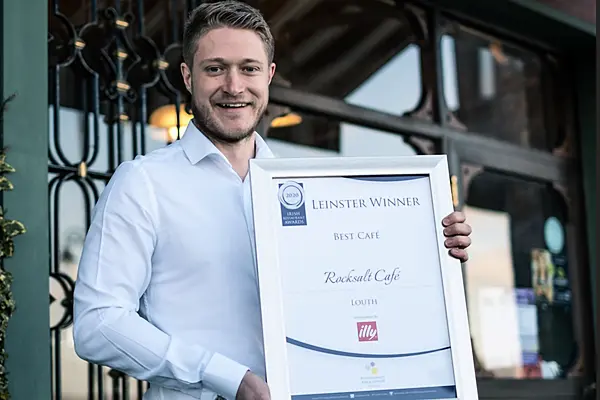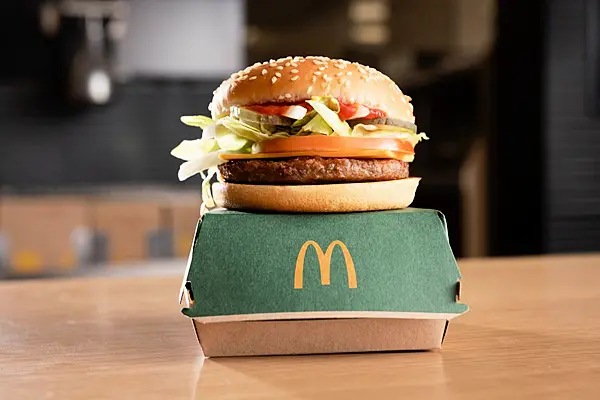With its wild beauty and spectacular beaches, Donegal is a must do for anyone visiting Ireland.
Donegal has excellent seafood and some of the best golf courses in the world.
With all these factors in mind, Hospitality Ireland decided to examine the top ten visitor attractions in Donegal, based on Fáilte Ireland's Visitor Attractions Survey 2022.
1. Glenveagh Castle and Gardens
(165,079)
Glenveagh Castle is the top attraction in Donegal with 165,079 visitors as of 2022.
Designed by John Townsend Trench, it was built between 1867 - 1873, and is modelled on early Irish tower houses.
Glenveagh extends over 16,000 hectares of north Donegal and regularly hosts special seasonal events. The Synge & Byrne Restaurant and Tea Room is located in the Glenveagh Visitor Centre and accommodates 100 people.
2. Fort Dunree Military Museum
(100,000)
Fort Dunree Military Museum in Buncrana takes second place on the list.
Built in 1798 following the arrest of Wolfe Tone, the Fort was extended in the late 19th century. It hosts a display of military memorabilia, large guns and artefacts from the 20th century.
A visit to Fort Dunree includes a video film presentation in the audiovisual theatre, access to the museum displays which fully demonstrate life at Fort Dunree and a visit to the underground bunkers that house a collection of artefacts. There are three walking trails to experience with views of the Inishowen Peninsula.
3. Sliabh Liag Cliffs
(81,768)
Located along the Wild Atlantic Way, Sliabh Liag Cliffs stand almost 2,000 feet high.
Sliabh Liag Boat Trips depart from Teelin Pier on the North side of Donegal Bay and there is a variety of trips available including angling, sightseeing, diving and more.
Last year, a €4.95 million development project was officially launched to enhance the visitor experience.
4. Glencolumbkille Folk Village Museum & Heritage Centre
(56,194)
Glencolmcille Folk Village is designed, built and maintained by local people.
It is a thatched-roof replica of a rural village which offers a glimpse into daily life as it was during past centuries.
The Folk Village Museum is a cluster of several small cottages, called a ‘clachan’, perched on a hillside overlooking Glen Bay Beach in the Gaeltacht (Irish-speaking area) of South West Donegal. Each cottage is an exact replica of a dwelling used by the local people in each of the 18th, 19th and 20th centuries and is equipped with the furniture, artifacts and utensils of its particular period. A reconstructed school house, fisherman’s dwelling and tiny pub-grocer can also be viewed.
5. Donegal Castle
(55,476)
Donegal Castle is a restored 15th Century, Norman tower house, located in the centre of Donegal Town.
The castle was originally built by the O’Donnell chieftains in the 15th Century, beside the river Eske. It was rebuilt in Jacobean style in the 16th Century by Sir Basil Brooke, after Hugh O’Donnell burnt it to the ground rather than let it fall into enemy hands.
Guided tours are available.
6. Lurgybrack Open Farm
(55,000)
Lurgybrack Open Farm is a place for all the family to see animals and have fun.
The centuries old farm building is home to a range of friendly farm animals that children can come face to face with.
Visitors are encouraged to play safely, wander by the riverside, walk or just relax.
7. Malin Head
(46,521)
Malin Head is Ireland’s most northerly point and is known for its excellent scenery and clean beaches.
A circuit of Malin Head brings you around the coast to Banba’s Crown where a derelict building known as The Tower, was once used as a signal station connecting America and Europe.
Visitors to Malin Head can enjoy walking, fishing and swimming.
8. Tropical World
(40,000)
Tropical World is Donegal’s first licenced zoo and has grown into a small species zoo with added attractions which are 80% under cover.
Located five minutes away from Letterkenny, it features hundreds of butterflies in free flight along with lorikeets and birds from around the globe. Lemurs, marmosets, owls, meerkats, sloths and toco toucans.
Tropical World also features an indoor play park, Jurassic Land with moving dinosaurs, a bug and reptile room, a souvenir shop, and picnic facilities.
9. Glebe House and Gallery
(39,337)
Glebe House was the home for nearly thirty years of the renowned artist Derek Hill.
Originally known as St Columbus, the 1828 Regency-style house is decorated with William Morris textiles, and collections of Islamic and Japanese art, as well as 300 works by leading twentieth-century artists such as Picasso and Kokoshka.
The house and gardens are displayed in an informal manner, as though Derek Hill was still in residence.
10. Doe Castle
(34, 370)
Doe Castle is located in Sheephaven Bay.
The fortress was built in the 1420s. For almost 200 years it served as home, refuge and bastion for at least 13 MacSweeney chiefs.
MacSweeney chief Eoghan Og II gave shelter to survivors of the 1588 Spanish Armada fleet at Doe. The last chief of the castle, Maolmhuire an Bhata Bhui, joined Red Hugh O’Donnell, lord of Tyrconnell, for the Battle of Kinsale in 1601.
An carved and ornamented Mac Sweeney grave-slab, dating from 1544, is on show inside the tower house.









